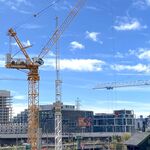Maybe I shouldn't have gotten into a whole fantasy map descriptive there, but the point I was trying to make was that we need to think from a more efficient network standpoint, rather than this goes there. It does not make sense to have passengers transfer on to an intermediate transit line which runs for a short stretch when the current line can be extended. While this goes for the SRT, this can be used anywhere. Do we have people travelling on toe Yonge line transfer to a LRT at Lawrence, then transfer back on to a subway at Sheppard-Yonge? Sure, looking at it from a bureaucratic perspective this make sense since there is less density along this stretch, but from a human perspective it seems like a cheap, needless transfer for the rider.
Obviously, transfers are a part of a transit network. But it is how they are executed which is important. People don't mind transferring too much at Bloor or Sheppard because they appear as separate lines with different set destinations. People don't mind St. George too much because to get between platforms requires nothing more than a short staircase. Meanwhile with the Danforth line, it feels that Scarborough Center/McCowan should be its destination. Kennedy doesn't feel like a destination, it feels like a stop in the middle of nowhere and that they were too cheap to extend the line. Even worse, transferring between the two lines requires walking up several flights of stairs (with limited escalator access) or taking two elevators which both move at a snail's pace.
When it comes to Transit City, it feels as if suburbanites are being told by downtowners what is best for them. Downtowners insist on bus-like stop spacing of only a few hundred meters, because they don't want people to walk too far. Meanwhile not only did I thought we were trying to encourage more walking among suburbanites, but people out here accept that everything is not a 30 second walk away and tend to be more willing to walk or cycle further to their stop. They also prefer "rapid" transit services with less stops and higher travel speeds compared to slower local transit services. And no, I don't have sources to back this up. I'm speaking from personal experience as a suburban transit rider, and from observing other suburban transit riders' behaviours. So if you want us to take transit, give us what we want and stop telling us what we should want!




